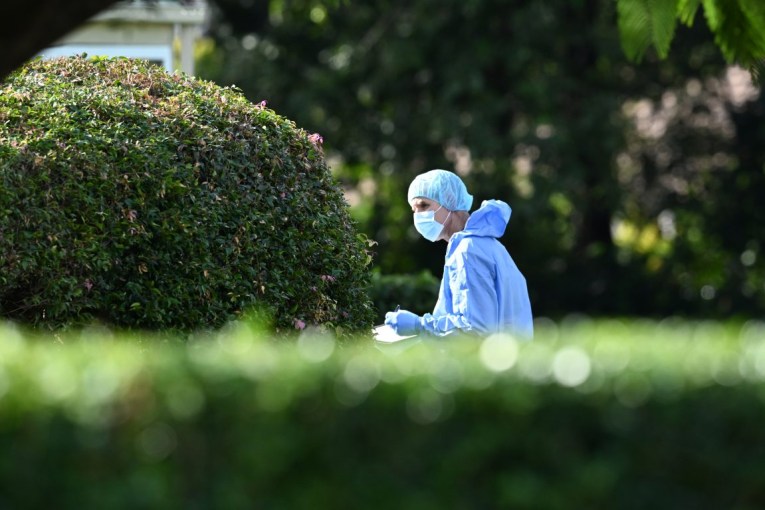Clean start: Crime-busting drug intervention program targets Qld youth crime
The Palaszczuk Government is partnering with a rehabilitation centre that has helped university researchers prove a direct connection between effective treatment for young people with alcohol and other drug addictions and lowering criminal behaviour.


The study’s findings come as the State Government walks a political tightrope to clampdown on a rising tide of youth offending, amid the LNP Opposition’s clamour for harder line penalties, contrasted with growing calls from social service providers and youth justice advocates that ‘tough on crime’ solutions will only enlarge the problem.
Released last week, findings from a University of NSW (UNSW) led project, which also involved Griffith University, endorse the view that repeat offending could be significantly curbed among young people who have a history of criminal convictions if they receive sustained and effective therapeutic intervention for alcohol and substance abuse.
The researchers say it is the first time a direct correlation has been established between young people receiving drug and alcohol treatments and the impact this has on their offending behaviour over a longer term.
They reached their conclusions after studying the Ted Noffs Foundation residential drug and alcohol treatment service focusing on adolescents with drug and crime-related issues.
Youth Justice Minister Leanne Linard has taken close note of the study’s outcomes. Last year her government announced a partnership with the Ted Noffs Foundation to build Queensland’s first in-house drug and alcohol rehabilitation facility for young people, to help, in her words, “combat the connection between substance misuse and youth crime”.
“The Queensland Government has allocated $7.7 million over four years and $2.5 million of ongoing funding to establish the 10-bed residential facility for youths aged up to 17,” she said.
“Up to three months of residential treatment will be provided, as well as follow-up treatment.”
Linard said the foundation was offering a day program in the Moreton Bay region, ahead of the official opening of the residential facility later this year.
Using modelling based on administrative records from the Ted Noffs program and the health and justice system, researchers found young people with a history of being convicted more than once for criminal offences at a young age benefited the most in terms of future crime reduction.
“The impact on serious conviction was marked, with an average of four fewer convictions five years after treatment compared to those who dropped out early before 30 days,” said chief investigator and co-author of the study, Associate Professor Sally Nathan from the School of Population Health, UNSW Medicine and Health.
“This is a massive win for these young people and the community.”
Mark Ferry, an expert in youth residential treatment who was a co-author of the study and chief operating officer at Ted Noffs Foundation, said diverting young people from the criminal justice system to services that address their underlying needs was integral to reducing youth crime.
“It’s so easy for governments to increase spending on detention centres. They are far from being a silver bullet. Youth detention is expensive and does not significantly reduce recidivism,” Ferry said.
“This study shows that treatment not only saves money and lives – it reduces crime and makes our community safer.”
Despite the multi-million dollar investment in drug rehabilitation, the Palaszcuk Government is holding fast to its commitments to enact tougher penalties and build more youth detention centres.
The LNP Opposition says the measures don’t go far enough and are urging more speed to fix “the crisis”, citing an alarming increase in car thefts in December as the latest evidence the government has lost control of the issue.
Not everyone is on-board with the ‘tough on crime’ approach, with the head of the Queensland Family and Child Commission, Luke Twyford, arguing that to effectively reduce youth offending, intervention needs to understand the young people’s circumstances that led them to offend, then tailor a response to that individual.
“Importantly, those responses must involve the young person’s broader family and support network,” he posted on LinkedIn last year.
As previously reported by InQueensland, many studies show that young people with problematic drug use often experience cumulative disadvantages across multiple life settings, including poverty, trauma, interrupted schooling, unstable living arrangements, mental illness and disability.
Twyford and others from his sector have found an unlikely ally in acting assistant police commissioner George Marchesini, who yesterday said it was the aim to keep children out of detention and treat the shortcomings of their life experiences when launching a new youth crime taskforce on February 1.
Nathan said the study’s findings were a call to move away from ‘tough-on-crime’ approaches towards a health and harm reduction response.
“In particular, more attention should be placed on addressing social determinants – the factors around young people that may lead them to commit crime,” she said.
The findings are published in the Journal of Criminal Justice.












